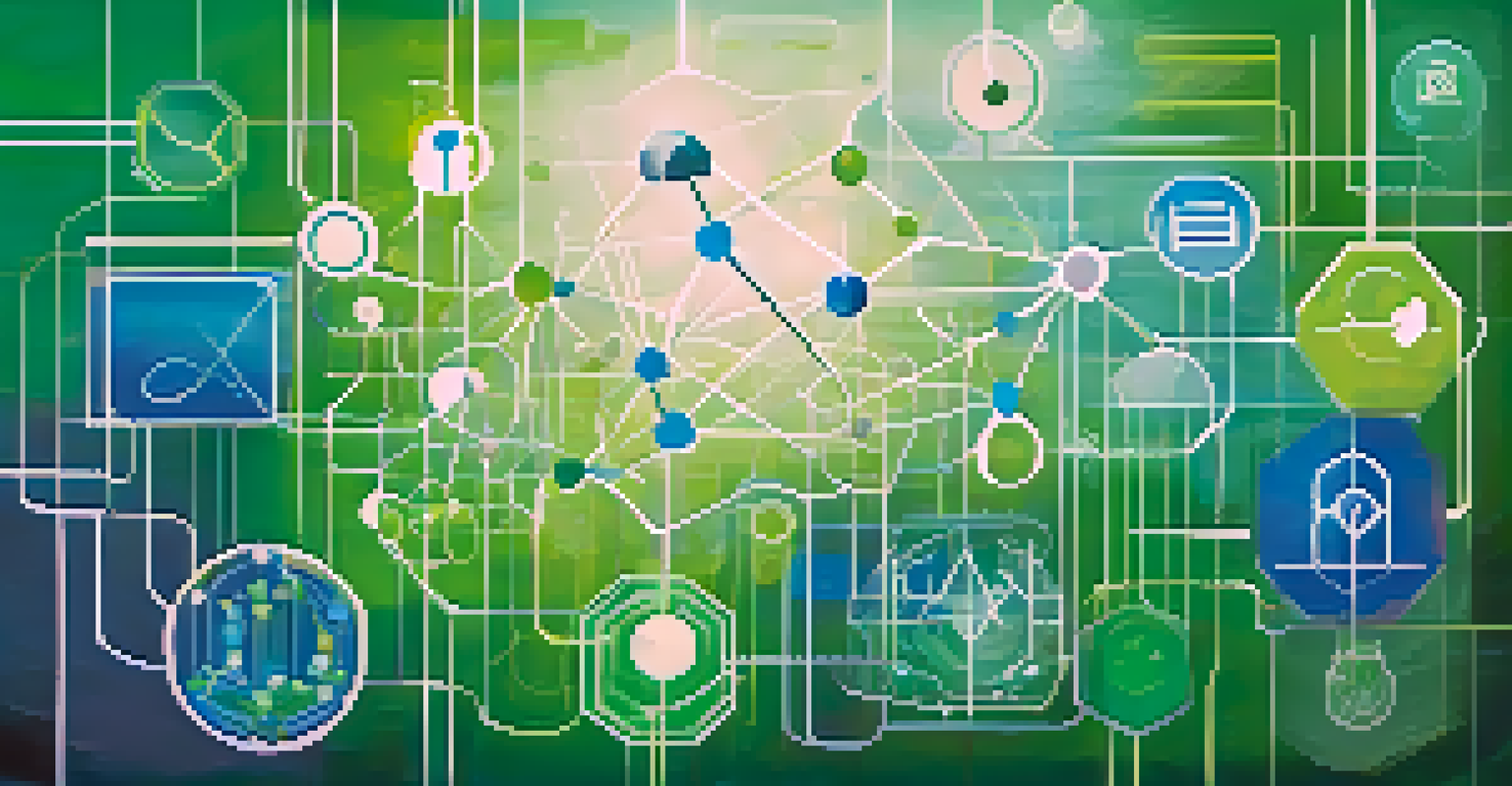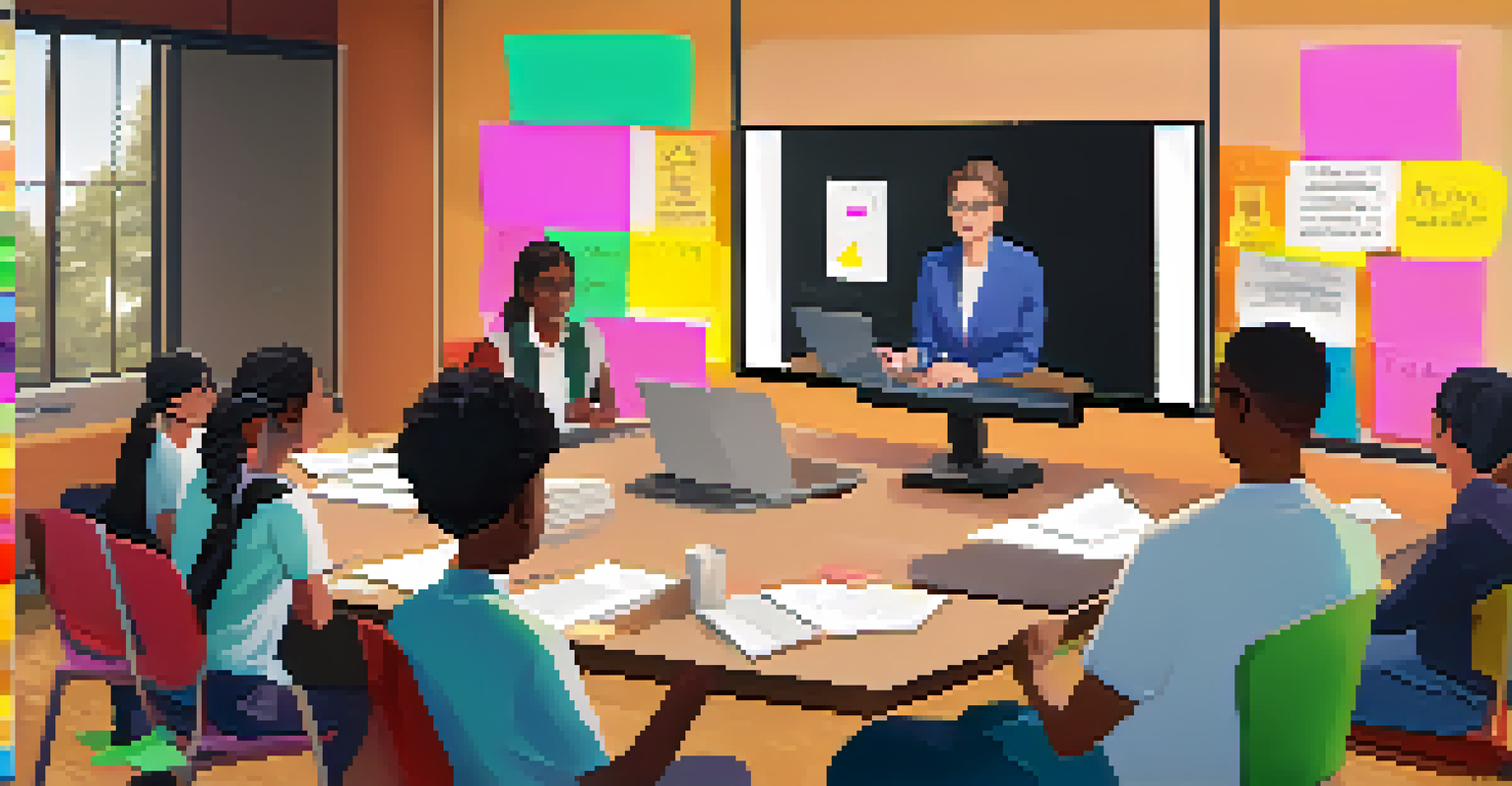The Role of Digital Assessment in Developing 21st Century Skills

Understanding 21st Century Skills and Their Importance
In today's fast-paced world, 21st century skills refer to a set of competencies crucial for success in life and work. These include critical thinking, collaboration, communication, and creativity. Unlike traditional education that focused primarily on rote memorization, the emphasis now is on nurturing skills that prepare students for real-world challenges.
The ability to think critically is the cornerstone of 21st century learning.
These skills are essential not just for academic achievement, but also for navigating the complexities of modern workplaces. For instance, employers increasingly seek individuals who can think critically and work well in teams. This shift calls for innovative approaches to education, where digital assessment plays a vital role.
Digital assessments provide a pathway to evaluate these skills effectively. By using technology, educators can create immersive assessments that reflect real-world scenarios, encouraging students to apply their knowledge in practical situations.
What is Digital Assessment?
Digital assessment refers to the use of technology to evaluate student learning and skills. This can range from online quizzes to interactive simulations that mimic real-life tasks. The goal is to gather data on student performance in a way that is efficient and informative.

One key advantage of digital assessments is their ability to provide instant feedback. Students can immediately see how they performed, allowing them to identify areas for improvement. This contrasts with traditional assessments, where feedback can take days or even weeks.
Importance of 21st Century Skills
21st century skills like critical thinking, collaboration, and creativity are essential for success in both academics and modern workplaces.
Moreover, digital assessments can be easily adapted to different learning styles. For example, visual learners might benefit from interactive tasks, while auditory learners can engage with verbal assessments, ensuring a more personalized learning experience.
Enhancing Critical Thinking Through Digital Assessment
Critical thinking is a cornerstone of 21st century skills, and digital assessments can play a pivotal role in its development. By presenting students with complex problems that require analysis and evaluation, digital tools encourage deeper engagement with content. For instance, simulations that require decision-making can foster critical analysis in real-time.
Collaboration and communication skills are essential for success in the modern workplace.
These assessments often involve open-ended questions that challenge students to articulate their reasoning. When students must defend their answers, they develop not just critical thinking but also communication skills. This interactive process mirrors the challenges they will face in their careers.
Furthermore, digital assessments can track student progress over time, providing insights into their critical thinking development. This data allows educators to tailor instructional strategies to meet individual student needs, ensuring everyone has the opportunity to thrive.
Fostering Collaboration and Communication Skills
Collaboration is essential in today's interconnected world, and digital assessments can facilitate group work in a virtual environment. Online platforms often include features that allow students to work together, share ideas, and provide feedback on each other's work, regardless of their physical location.
For example, virtual project-based assessments can require students to collaborate on a common goal, enhancing both their teamwork and communication skills. By engaging in discussions and negotiating solutions, students learn to navigate differing viewpoints, a crucial aspect of effective collaboration.
Role of Digital Assessments
Digital assessments leverage technology to evaluate student learning effectively, providing instant feedback and personalized learning experiences.
Moreover, these assessments can incorporate peer evaluation, where students assess each other's contributions. This not only reinforces accountability but also sharpens their ability to give and receive constructive feedback, a vital skill in any career.
Encouraging Creativity Through Innovative Assessment Methods
Creativity is another vital 21st century skill, and digital assessments offer unique opportunities to nurture it. For instance, students can create multimedia presentations or digital portfolios that showcase their work and ideas. This allows for self-expression while also demonstrating their understanding of concepts.
Interactive assessments, such as game-based learning, can further stimulate creativity. These platforms often require students to think outside the box, solve problems in innovative ways, and engage with content dynamically. This playful approach can make learning more enjoyable and memorable.
Additionally, educators can design assessments that encourage creative brainstorming and idea generation. By providing a safe space for experimentation, digital assessments help students explore new concepts and develop their creative thinking skills.
The Role of Data in Informing Instruction
One of the most significant advantages of digital assessments is the wealth of data they generate. Educators can analyze this data to gain insights into student performance, identifying trends and areas of struggle. This evidence-based approach enables targeted interventions that can enhance student learning.
For instance, if data reveals that many students struggle with a particular concept, teachers can adjust their instruction accordingly. This might involve revisiting certain topics, providing additional resources, or changing their teaching methods to better meet student needs.
Future of Education and Technology
As technology advances, digital assessments will play a pivotal role in transforming education by fostering essential skills for an evolving world.
Moreover, data from digital assessments can inform curriculum development. By understanding which skills students excel in and which they find challenging, educators can design more effective programs that align with the demands of the 21st century.
Challenges in Implementing Digital Assessments
While digital assessments hold great promise, they also come with challenges. One significant hurdle is the digital divide; not all students have equal access to technology. This disparity can lead to inequities in assessment outcomes, highlighting the need for schools to address these gaps.
Moreover, educators may require training to effectively implement digital assessments. Understanding how to create engaging, meaningful assessments and interpret the data can be a learning curve for many teachers. Ongoing professional development is crucial to ensure that assessments are used to their full potential.

Finally, it’s essential to balance digital assessments with traditional methods. While technology offers innovative approaches, a mixed-method strategy can provide a more comprehensive view of student learning, ensuring that all skills are adequately measured.
The Future of Digital Assessment in Education
Looking ahead, the role of digital assessment in education will likely continue to grow. As technology evolves, so too will the ways we assess student learning. Innovations such as artificial intelligence and adaptive learning technologies promise to make assessments even more personalized and effective.
There is also potential for greater integration of digital assessments into everyday classroom practices. By incorporating assessments seamlessly into learning activities, educators can create a more fluid and continuous evaluation process that supports student growth.
Ultimately, embracing digital assessment can transform education, equipping students with the skills they need for success in the 21st century. By fostering critical thinking, collaboration, creativity, and effective communication, we can prepare students to thrive in an ever-changing world.